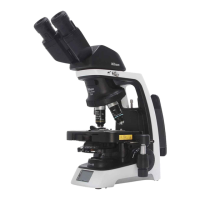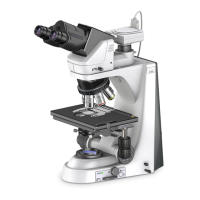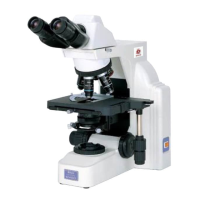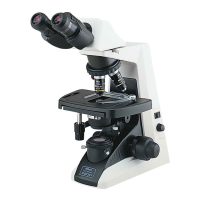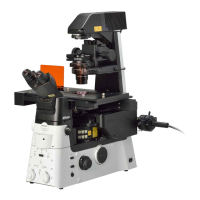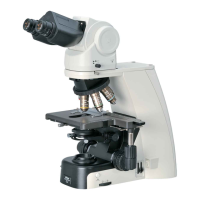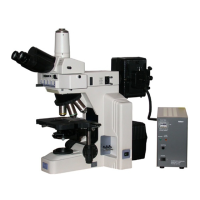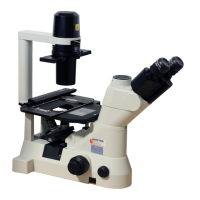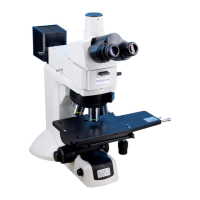Chapter 3 Individual Operations
93
Individual
Operations
Enabling/disabling the operation of the elevating section
You can disable the operation of the elevating section.
As factory default setting, a focus knob is used to drive the elevating section, but you can “disable” the setting when an
application software such as NIS-E is used to control the elevating section or you wan to prevent unintended behavior
of the elevating section, including an accidental contact of the focus knob of Ni-E microscope or ergo controller (or
joystick). (See “23 Operation on DS-L3” - “23.1 Setting Up the Microscope - (6) Configuring Other Functions” for
details.)
Upper limit of the movement
2000.000 μm is set as factory default setting for the upper limit of the elevating section, but the upper limit can be
changed programmatically. The allowable range for the upper limit is between 250.000 μm and 2000.000 μm. (See “23
Operation on DS-L3” - “23.1 Setting Up the Microscope - (6) Configuring Other Functions” for details.)
The lower limit cannot be changed.
Stop position by focus restriction
When operating the elevating section with the focus knob, the actual stop position is up to 20 μm beyond the set
upper/lower limit.
Interlocking of ALF (parfocal correction)
The difference between focal points of objectives is automatically corrected when switching an objective. See “19.2
Interlocking Function” for conditions for interlocking and interlocked operations.
Interlocked operation of vertical (Z) stage movement speed
A vertical (Z) stage movement speed can be interlocked when switching an objective. See “19.2 Interlocking Function”
for details on conditions for interlocking and interlocked operations.
4.2
Focus Knobs on the Main Body
Focus Knob Rotation and Stage Movement
Both the coarse focus knob and the fine focus knob are located
on both right and left sides on the microscope. The table below
shows the relationship of the focus knobs' rotation with the stage
movement.
Focus Knob Rotation and Stage Movement
To lower the stage Turn the knob toward the front.
To raise the stage Turn the knob toward the back.
IN
ND
8
ND
32
NCB
11
OUT
Focus Knob Rotation and Stage Movement
Number of Focus Knob Turns and Distance of Stage Travel
Number of Focus Knob Turns and Distance of Stage Travel
No. of knob turns Distance of stage travel (vertical direction)
One rotation of the coarse focus knob Approx. 2 mm
One rotation of the fine focus knob Approx. 6 m
The vertical motion range (coarse/fine focus stroke) of the stage is from approximately 2 mm above the focal point
(reference position) to approximately 13 mm below the focal point.
Fine focus knob
Coarse focus
knob
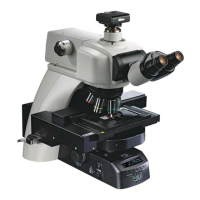
